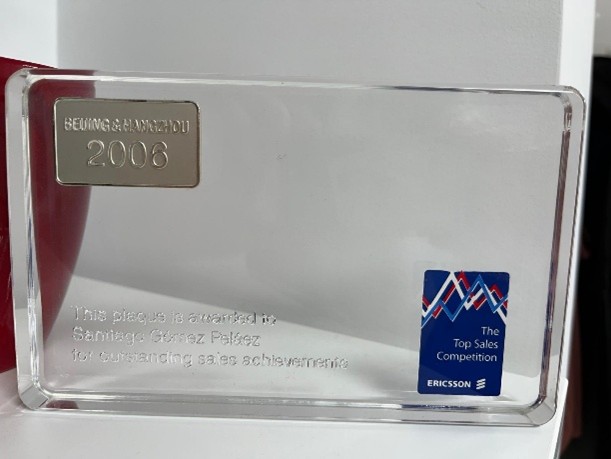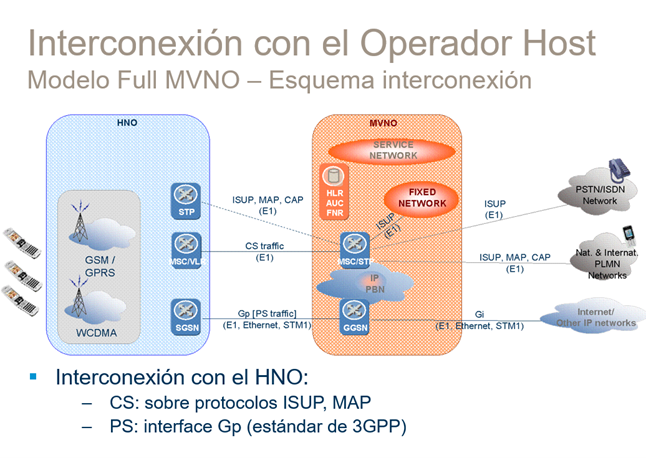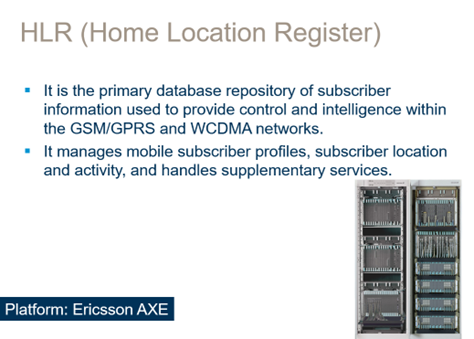2006 — what a time that was!

China, 2007: A young Ericsson salesman standing on the Great Wall, wearing an Euskaltel cycling T-shirt. What does that have to do with a Full MVNO? It was the reward for an outstanding project — the launch of Ericsson’s very first Full MVNO worldwide, achieved in record time.

If we want to talk about evolution, we must first understand where we come from.
Take, for example, the Spanish market, where the concept of the Mobile Virtual Network Operator (MVNO) was liberalized in 2006. At that time, Euskaltel, besides sponsoring its famous cycling team, was reselling Orange’s mobile services.
As an anecdote, a young Ericsson sales account manager for Euskaltel happened to hear the term “virtual mobile” during a meeting. Back at the office, curiosity led him to research the world of MVNOs and that’s how a new opportunity was born.
Lesson learned: as I mentioned in my previous post “AI Isn’t Meant for Everything”, human perception cannot be easily replaced by AI.
That story could fill a book, from the director who once said “Ericsson sells real networks, not virtual ones”, to those who claimed MVNOs were doomed in Europe, until, fortunately, a good friend and unparalleled telecom guru, Paco Ruiz, now semi-retired, stepped in during a meeting in Zamudio and convinced everyone that we were the perfect partner.
However, progress didn’t move as fast as that young salesman would have liked. Luckily, the Director of Strategy, Nacho Molinos, and the Director of Engineering, Idoia Uriarte, were invited to attend BT’s Twenty-First Century Conference in London by such young salesman. There, on a walk along the Thames, they verbally agreed that Ericsson would conduct a consultancy to determine how Euskaltel could migrate from being an Orange reseller to becoming a Full MVNO under Vodafone’s umbrella.
Even after all these years, and although confidentiality obligations have long expired, professionalism prevents me from disclosing certain details. I can only say that the agreed consulting fee exceeded a few hundred thousand euros. What I can share is that it was an exceptional project, led by my great colleague Rafael Olivares.
Consulting services can have a significant impact, though they naturally come at a cost.
The outcome was a fascinating negotiation that took place around July 2006, I still fondly remember the intense discussions with my esteemed friend Aitor Ibargüen, which led to a solid technical and financial agreement (let’s just say it involved millions of euros). This made Euskaltel’s dream a reality: becoming an operator with the greatest possible independence, a true Full MVNO, and surprisingly, not with Orange, but with Vodafone.
Second lesson learned: If you don’t do it now, your competitor will.
Let’s not forget we’re talking about 2006, the era of 2G and 3G, with 4G still far on the horizon. Between July 18 and November 20, two dates with “certain significance” in Spain, there were only four months to complete this migration, and it had to be done in total secrecy.

How old-fashioned it sounds to talk about E1s and STM1s, nowadays, all-IP networks are a must.
The deployment was carried out in record time, fully redundant, covering both control and user planes, using Ericsson’s proprietary hardware and software, and including all the necessary functionalities.
After Euskaltel came R Cable, and later ONO. I want to especially highlight ONO, since it was the first time in my career at Ericsson that I witnessed the signing of a contract using Pay as you Grow model, a milestone for the industry. The great mistake was to base all the service on the predecessor to Bluetooth-based VoWiFi deployed by ONO Spain was the service known as “ONO io.” This service combined mobile and fixed networks by using a special phone that enabled calls through both the mobile network and the home’s Bluetooth coverage, connecting via a base linked to the fixed line. This approach tried to ensure call continuity and cost savings, effectively acting as a forerunner to modern VoWiFi but using Bluetooth technology for the home segment instead of WiFi, but there were no more than 3 or 4 devices models with such technology and it was a big mistake, then no grow, no pay.
Third lesson learned: Not all the models work at any time.
This article is about evolution, and not only in terms of the technologies of that time (2G, 3G). It’s about the great leap, from networks built on proprietary hardware and software to today’s deployments based on open technologies like Open5GS, commercial off-the-shelf hardware, and, more importantly, the cloud, and most important the commercial models, CAPEX vs OPEX vs Pay as you Grow vs Network as a Service, as the commercials will impact in any other decision.

A good example of proprietary hardware: an HLR view from back in 2006.
2025 — how to build it!
Starting with technology, deploying 2G or 3G networks no longer makes sense today except for the need to migrate a significant base of legacy users. Although some operators are still required to do so, the upcoming sunset of 2G and 3G technologies in the next few years means these have no real future. This already brings important implications: fewer components are needed for deployment, integration complexity is reduced, and IMS will be necessary for voice services in any case in the short term.
The second key aspect is the deployment model. In some cases, due to regulatory requirements, an on-premises rollout is necessary. Still, it is a major step forward to be able to use commercial off-the-shelf hardware and not rely on proprietary systems. Utilizing commercial servers, whether physical or cloud-based, provides even more flexibility. However, deployments can become complex, especially with geo-redundant, distributed infrastructures that must be able to scale dynamically.
Fourth lesson learned: Legacy technology It’s water under the bridge..
Finally, and most importantly, services across all segments are shifting toward on-demand, pay-per-use models—such as ride-sharing (Uber, Lyft), food delivery (DoorDash, Uber Eats), home services (TaskRabbit, Handy), and grocery delivery (Instacart, Amazon Fresh). These platforms allow users to request and pay only for the specific service they need in real-time, offering convenience, scalability, and flexible access to transportation, meals, professional help, or everyday products.
In a competitive landscape like that of mobile virtual network operators (MVNOs), the ability to launch a telecom operator paying only for the resources required at any given time, already adopted by many service providers and increasingly embraced by full MVNOs, is a game-changer. Delegating network design, deployment, and management to third-party specialists enables operators to focus on specialization without needing to hire highly specialized telecom teams for complex network operations, especially as networks evolve toward 5G Standalone. This paves the way for future-proof deployment, management, and evolution by leveraging core expertise from dedicated technology partners.
Fifth lesson learned: It’s time for Network as a Service.
Conclusion
I would like to emphasize that both outdated technology and legacy business models no longer fit the current stage of mobile technology development, and it is essential to adapt to the new era.

Guest Blogs are written by carefully selected Experts. If you also want to create a Guest blog then Contact us.
